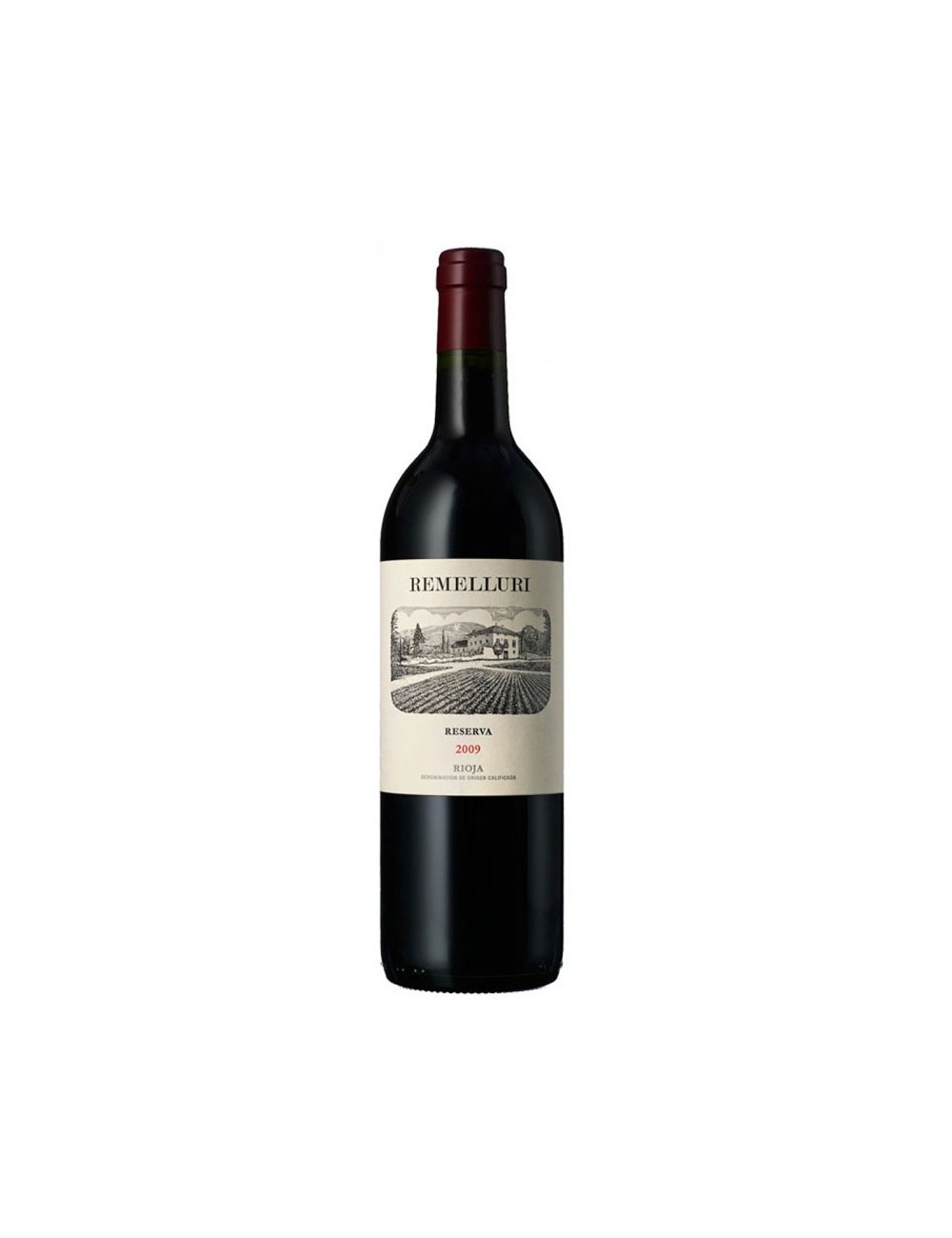Remelluri Reserve Red Wine
Remelluri Red Wine
DO. Rioja
Varieties:
Tempranillo, Garnacha, Graciano, Viura and Malvasia
Don't miss this wine and the opportunity to enjoy it like never before.
Because we all deserve our moments,
Here you have your unforgettable experience!
Here you have your wine!
Remelluri Red Wine
DO. Rioja
Varieties:
Tempranillo, Garnacha, Graciano, Viura and Malvasia
Vintage:
Traditional, ecological, with biodynamic treatments.
100% manual in 20 kg boxes. The harvest begins at the beginning of October and ends at the end of October/beginning of November. Field and table selection.
Remelluri Reserva is the original wine of La Granja Nuestra Señora de Remelluri, fruit of the most important vineyards on the property. It was the first in Rioja based on a single vineyard property, according to the classic Medoc Bordeaux model. This estate wine is born in the three valleys that surround the winery (Remelluri, Valderremelluri and Villaescusa), areas that have been part of the Nuestra Señora de Remelluri Farm since the 14th century. They belong to the municipalities of Labastida (Rioja Alavesa) and Rivas de Tereso, a district that belongs to San Vicente de La Sonsierra (Rioja Alta).
Tasting Note:
View. Cherry cherry with maroon rim.
Nose. It is rich in creamy touches of oak, good expression of ripe red fruits and black fruit, with a background of jam and cherries in liquor, earthy notes.
Mouth. Excellent structure and very balanced. Tasty and with a long and spicy finish.
Breeding:17 months in barrels of different origins and sizes.
Alcoholic grade:
13.5% vol
Operating temperature:
16º-18ºC
Packaging:
750ml bottle. Boxes of 6 bottles
La Granja de Nuestra Señora de Remelluri Winery
The origin of Remelluri Farm is lost in the mists of time. A necropolis in the center of the estate indicates the existence of a town as early as the 10th century. It tells us about the Alavés count "Erramel", founder of "Erramelluri", a high medieval historical place name.
In this place, surrounded by our oldest vineyards, carved into the rock is an ancient wine press, surely constituting one of the oldest wine vestiges in La Rioja. In the 14th century, Hieronymite monks settled in these lands, creating a monastic farm, which became dependent on the sanctuary of Toloño, located at the summit of this mountain.
The farm's crops, protected from wind and frost, enjoy an exceptional microclimate. In its surroundings, vestiges of prehistoric, Roman, Visigothic, Arab and finally medieval populations tell us about agricultural activity since ancient times.
The monks abandoned the place in the 15th century; The sanctuary was maintained by hermits who worshiped it until well into the 19th century. The farm and the monastery are dependent on the Real Divisa, a communal entity of which all the towns around Toloño are part. They manage the agricultural lands of the farm, serving with their fruits the important mass of pilgrims who came from all over the world to pray at the sanctuary.
The oldest account book preserved in the Labastida Town Hall, dated 1596, records every year and until the last century the contribution of wine in jugs from the Nuestra Señora de Remelluri Farm.
1837, in the first civil war, the sanctuary was burned by liberal troops after defeating a siege by the Carlists of Peñacerrada. In 1845, with the confiscation law, land, houses, even the hermitage of Santa Sabina were sold to the highest bidder.
A landowner from Labastida acquires the main nucleus, maintaining the vineyard. This property, of approximately 20 hectares, remained intact until 1967, and was then acquired by Jaime Rodríguez Salis and Amaya Hernandorena.
Since then, the Granja de Nuestra Señora de Remelluri has been recovering its old lands, currently having 154 hectares, 105 of which constitute a restored vineyard; origin of Remelluri wines.
Vineyard:
Poor limestone terraces, clay-calcareous in nature, with a bedrock that emerges in areas. These terraces are made up mostly of sandstones and marls whose origin is in the Quaternary era.
All data comes from La Granja Nuestra Señora de Remelluri.






